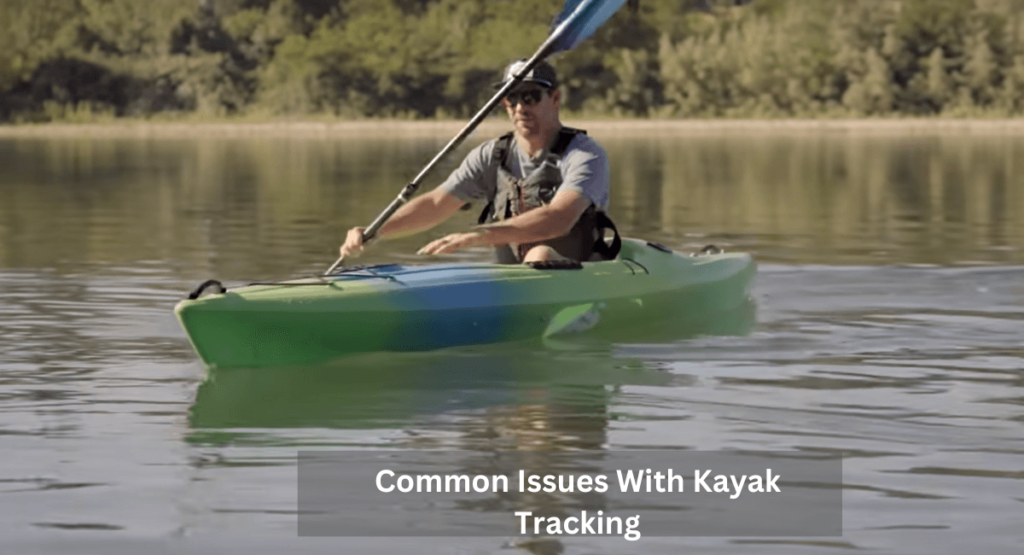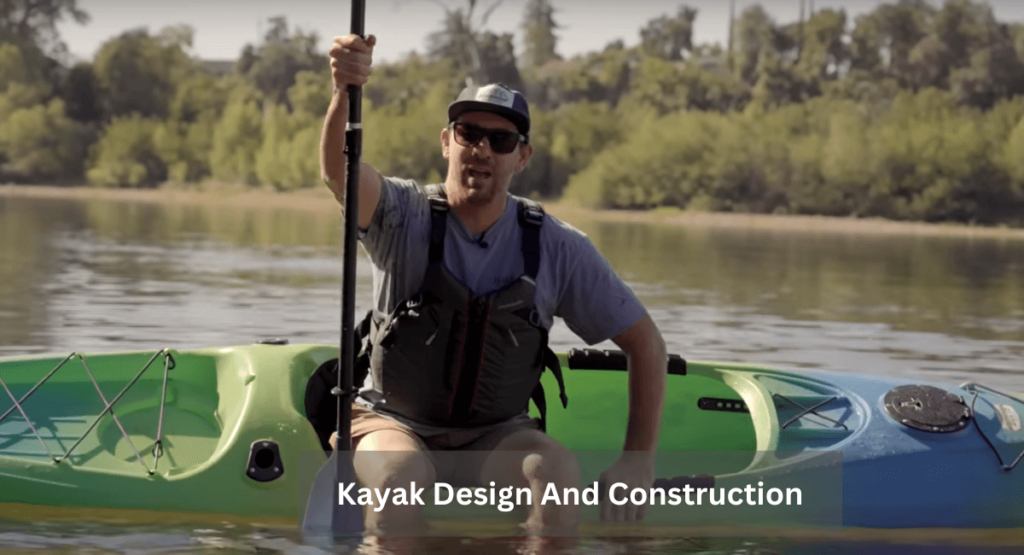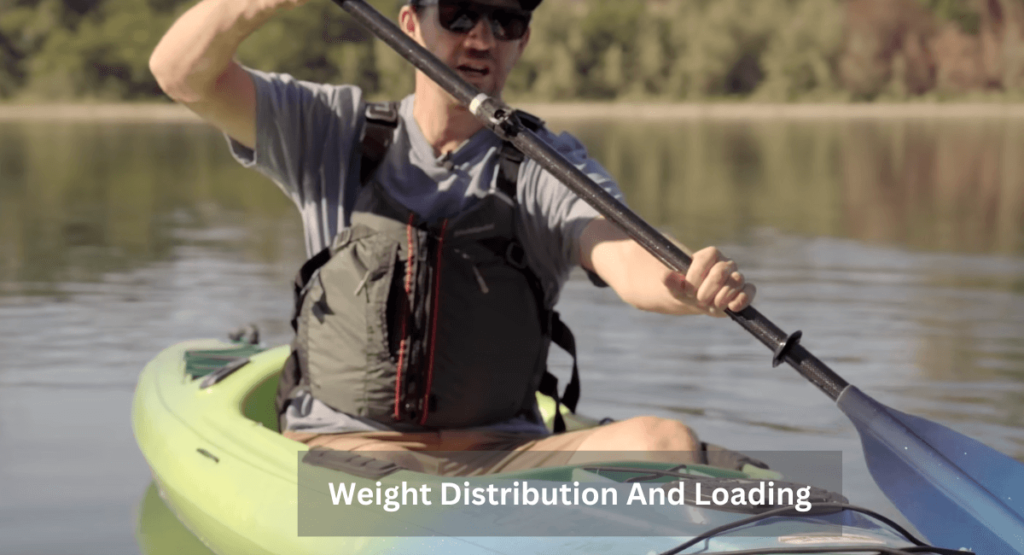Your kayak may not go straight due to incorrect paddling technique or an imbalance in weight distribution. Correcting these issues can help improve the kayak’s tracking performance.
When it comes to kayaking, maintaining a straight course is essential for a smooth and efficient ride. However, many factors can cause a kayak to veer off track, leading to frustration and discomfort for the paddler. Understanding why your kayak is not going straight is crucial for addressing the issue and enhancing your overall kayaking experience.
We will explore the common reasons why kayaks struggle to maintain a straight trajectory and provide practical tips to help you correct this problem. By implementing these solutions, you can enjoy smoother, more controlled paddling and confidently navigate your kayak in the desired direction.
Common Issues With Kayak Tracking

Kayak tracking issues are common and can be frustrating. If your kayak doesn’t go straight, it could be due to factors like improper paddling technique, wind or current, or even a misaligned rudder. Understanding these causes can help you address the problem and improve your kayak’s tracking ability.
Kayaks are designed to glide smoothly on the water, but sometimes they tend to veer off course. Understanding the common issues with kayak tracking can help you navigate the waters more effectively.
Improper Paddling Technique
Using the correct paddling technique is crucial for maintaining straight kayak tracking. Make sure to position your hands correctly on the paddle and maintain an even paddle stroke to keep the kayak on course.
Wind And Current Effects
Wind and currents can significantly impact the direction of your kayak. Be aware of the wind’s direction and try to paddle against it to counter its effects. Similarly, understand how currents flow in the water and adjust your paddling technique accordingly.
Kayak Design And Construction

Kayak design and construction play a significant role in determining why your kayak might not go straight. Understanding the influence of hull shape and width, as well as the presence of a rudder or skeg, can help you get to the root of the issue. Let’s delve into these aspects to gain a better understanding of their impact on the kayak’s steering performance.
Hull Shape And Width
The hull shape and width of a kayak have a direct impact on its tracking ability. A wider hull generally provides more stability but can be harder to keep in a straight line, while a narrower hull tends to track better but may sacrifice some stability. Consider the rocker, or the curve, of the hull as well, as a kayak with more rocker may have better maneuverability but might not track as efficiently.
Rudder Or Skeg Influence
A rudder or skeg can greatly influence a kayak’s ability to maintain a straight course. A rudder is a movable fin that can be controlled by the paddler’s feet, helping to compensate for wind or current. On the other hand, a skeg is a fixed fin that provides resistance against the forces that cause the kayak to veer off course, offering enhanced tracking. Both of these features can greatly improve a kayak’s steering performance, especially in challenging conditions.
Weight Distribution And Loading

To ensure your kayak goes straight, consider weight distribution and loading. Uneven weight can lead to instability and difficulty steering. Adjust the weight properly to improve tracking and control of the water.
Weight Distribution and Loading are crucial factors that can significantly impact the performance of your kayak. Understanding the impact of uneven weight distribution and overloading is essential for ensuring a smooth and efficient paddling experience.
Impact Of Uneven Weight Distribution
“` Uneven weight distribution in your kayak can cause it to veer off course, making it difficult to maintain a straight line while paddling. When the weight is not evenly distributed, one side of the kayak may sit lower in the water than the other, causing it to turn in that direction. This can lead to increased resistance and drag, hampering the kayak’s ability to move forward efficiently.
Effect Of Overloading
“` Overloading your kayak with excessive weight can also have a detrimental effect on its ability to travel in a straight line. An overloaded kayak sits lower in the water, increasing its resistance and making it more difficult to maneuver.
This can make it challenging to keep the kayak on course, as the added weight can cause it to drift or veer off track. When packing your kayak, it’s important to distribute the weight evenly from front to back and side to side. This ensures that the kayak maintains optimal stability and balance on the water. By paying attention to weight distribution and avoiding overloading, you can help your kayak track straight and improve its overall performance.
Environmental Factors
When it comes to kayaking, various environmental factors can affect your ability to paddle straight. Understanding the impact of these factors is crucial for enhancing your kayaking experience.
Impact Of Weather Conditions
- Windy conditions can cause your kayak to veer off course, requiring increased effort to maintain a straight path.
- Strong currents may influence your kayak’s direction, especially in open water or rivers with fast-flowing water.
- Rain can impact visibility and add weight to your kayak, making it harder to steer.
Influence Of Water Body Type
- Open oceans tend to have more unpredictable currents and waves, challenging your ability to stay on course.
- Rivers with varying water levels can affect the speed and direction of your kayak, requiring adaptive paddling techniques.
- Lakes may experience shifting winds that can push your kayak off track, necessitating constant adjustments.
Maintenance And Care
Proper maintenance and care play a crucial role in ensuring that your kayak performs at its best. Neglecting these aspects can lead to a variety of issues, such as your kayak not going straight. In this article, we will cover two important factors related to maintenance and care – the importance of regular maintenance and the influence of hull damage.
Importance Of Regular Maintenance
Regular maintenance helps keep your kayak in top shape, enhancing its performance and longevity. By following a few simple maintenance practices, you can minimize the likelihood of your kayak veering off course:
- Clean your kayak after each use: Remove any debris, dirt, or saltwater residue from the hull and cockpit area. This prevents the build-up of grime that may affect your kayak’s maneuverability.
- Inspect and tighten fittings: Check all fittings, such as handles, hatches, footrests, and rudder systems. Ensure they are properly secured and tightened to avoid any loose connections.
- Check and adjust the rudder: If your kayak is equipped with a rudder, inspect it regularly for any damage or misalignment. Adjust the rudder as necessary to maintain proper tracking.
- Inspect the skeg: For kayaks with a skeg, ensure it is functioning correctly and not obstructed by debris. Adjust the skeg position to assist with straight-line tracking.
- Verify the seat position: Make sure your seat is properly positioned and secured. Incorrect seat placement can affect your balance and steering capabilities.
- Check the paddle: Inspect your paddle for any cracks or damage. A damaged paddle may affect your ability to paddle straight.
Influence Of Hull Damage
Hull damage is another common cause of a kayak not tracking straight. Even minor cracks or dents in the hull can disrupt the hydrodynamics, leading to changes in direction. Here are a few things to consider regarding hull damage:
- Inspect the hull: Regularly examine your kayak’s hull for any signs of damage, including cracks, scratches, or punctures. Address these issues promptly to prevent further complications.
- Repairing hull damage: If you notice any damage to the hull, assess the severity. Small scratches or minor cracks can generally be addressed with DIY repairs, but more extensive damage may require professional assistance.
- Protective measures: To minimize the risk of hull damage, avoid dragging your kayak across rough surfaces or hitting rocks. Use protective measures such as keel guards or kayak carts when transporting your kayak.
By prioritizing regular maintenance and promptly addressing any hull damage, you can ensure your kayak remains in optimal condition and tracks straight on the water.
Frequently Asked Questions On Why Does My Kayak Not Go Straight
Why Does My Kayak Not Go Straight?
When a kayak doesn’t go straight, it can be due to various reasons. Common causes include improper paddling technique, wind or current, weight distribution, or a damaged rudder or skeg. Ensuring proper paddling technique, adjusting weight distribution, and checking for any kayak damage can help resolve this issue and improve straight-line tracking.
How Can I Improve The Straight-line Tracking Of My Kayak?
To improve the straight-line tracking of your kayak, focus on your paddling technique. Keep your strokes consistent and symmetrical on both sides of the kayak. Additionally, properly distributing your weight, especially in larger or more unstable kayaks, can help improve tracking.
Consider using a rudder or skeg to assist with tracking in challenging conditions such as wind or strong currents.
What Is The Role Of Weight Distribution In Kayak Tracking?
Weight distribution plays a crucial role in kayak tracking. An improper weight distribution can cause the kayak to veer off-course. To improve tracking, distribute your weight evenly between the bow and stern, keeping the kayak balanced. Adjust your position and the placement of any gear or equipment accordingly to achieve optimal weight distribution and improve straight-line tracking.
Conclusion
If your kayak isn’t going straight, it could be due to improper paddling techniques. Practice and correct form can improve your kayaking experience. Remember to maintain balance and use consistent strokes to ensure smooth navigation on the water. Enjoy your time on the water and keep exploring!
